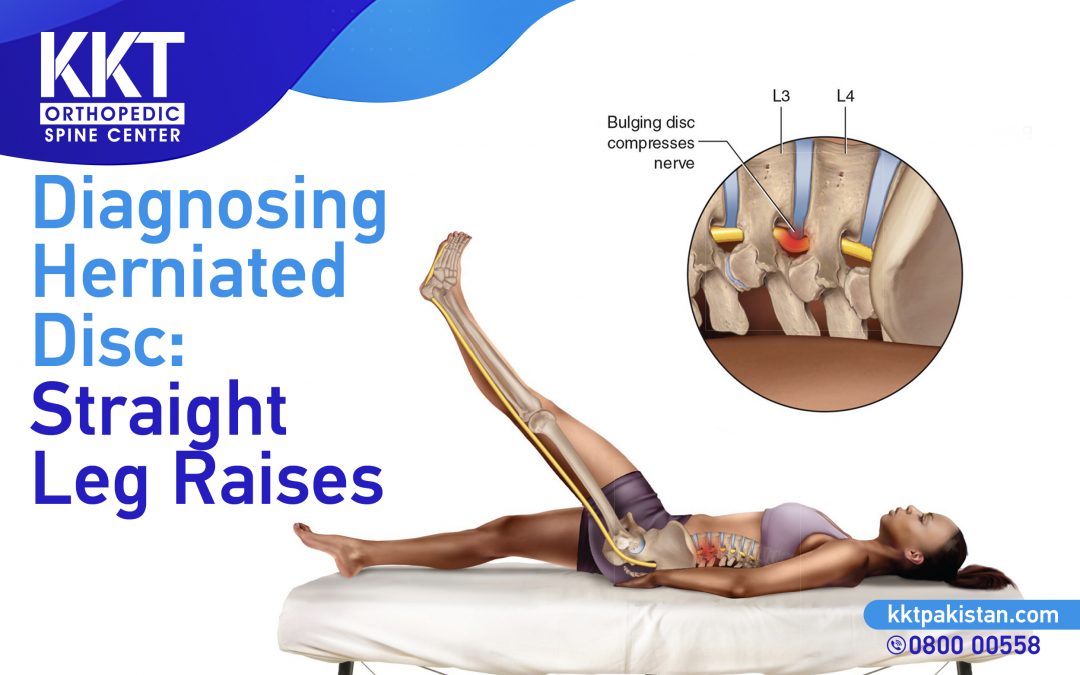What is a Herniated Disc?
A herniated disc is also known as a slipped disc. In this condition, the inner rubbery cushion (intervertebral disc) slips out of the vertebrae into the spinal canal, therefore, pressing on the spinal nerves. A slipped disc or ruptured disc can occur in any of your vertebrae depending on the symptoms that appear. Symptoms for herniated discs include pain, numbness, or weakness. Disc herniation can be caused due to degenerative wear and tear as people age. Sometimes a traumatic event (rare) or lifting heavy objects can also result in a slipped disc. There are a number of gentle herniated disc exercises to help manage the pain e.g., walking, yoga, or pilates. This article gives an overview of a common physical test for diagnosing herniated disc i.e., straight leg raise test.
Can I have a herniated disc?
Spine-related conditions like back pain usually get to you unannounced. However, the big question is, what is causing it? The sign of a herniated disc depends on the location or part of the spine i.e., lumbar (lower back) disc herniation or cervical (neck) herniated disc. As mentioned earlier, it can take place in any part of your spine but it is more common in the lower back; the lumbar spine. Symptoms of a lumbar herniated disc include pain, numbness, and weakness in the thighs, buttocks, or legs. It can also involve radiating pain down your leg also known as sciatica (in case the sciatic nerve is being compressed due to slipped disc).
Herniated Disc Symptoms:
Common signs and symptoms include:
- Pain that radiates down the arm or legs
- Numbness and pain are usually on only one side of the body
- Lower back pain and radiating leg pain, also known as sciatica
- Pain that worsens with walking, standing, or sitting.
- Tingling or burning sensation in the affected area or side.
Diagnosing a herniated disc:
There are a number of physical and diagnostic tests out there to check for a slipped disc. Along with verbal questions regarding your symptoms, your doctor might suggest a physical exam to diagnose the cause of your pain. During which the doctor may look for sore and painful spots in your back as well as ask you to lift your leg. This test particularly checks for any lumbosacral nerve irritation. It is also classified as a neurodynamic evaluation test with specific importance for the detection of a herniated disc and any nerve root tension.
Straight Leg Raise:
The leg raise test is also known as straight leg raise or LaSegue Test. The most common reason behind a positive straight leg raise is a herniated disc. It’s fairly easy to perform a straight leg raise.
During this test, your doctor will ask you to lie down and lift your leg up in the air. A straight leg raise test is considered positive if you feel pain radiating down, at 30° to 70°. It is an easy and simple test used to diagnose the underlying cause of the pain.
Why KKT?
KKT offers a revolutionary non-surgical spinal treatment. This treatment primarily focuses on the diagnosis and treatment of patients suffering from spinal ailments, chronic back, and neck pain.
Symptoms of a slipped disc can vary from person to person. If you have any of the above-mentioned symptoms, book an appointment with your nearest KKT center. Get your thorough physical examination and diagnoses with KKT Orthopedic Consultants in Lahore, Karachi, Multan, and other KKT operational centers across Pakistan.
KKT Orthopedic spine center provides herniated disc treatment along with various other spine-related disorders. Find further details regarding KKT Pakistan here.
Alternatively, you can also contact us via the below-given number. One of our representatives will guide you to the best of their ability.
Phone: 0800-00-558

